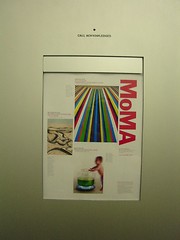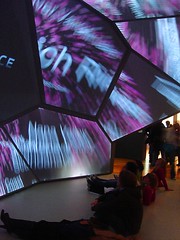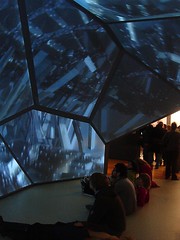 This is a truly well-orchestrated exhibit : Design and the Elastic Mind at the Museum of Modern Art (MoMA). The online exhibit is already a wonderful feast for interface buffs, visualization maniacs, designers, thinkers and tinkerers - but going to the actual exhibit is all the more inspiring and stimulating as it could ever be. Even my se7en-year-old son enjoyed it!
This is a truly well-orchestrated exhibit : Design and the Elastic Mind at the Museum of Modern Art (MoMA). The online exhibit is already a wonderful feast for interface buffs, visualization maniacs, designers, thinkers and tinkerers - but going to the actual exhibit is all the more inspiring and stimulating as it could ever be. Even my se7en-year-old son enjoyed it!The installations were very good. Although i think its only a subset of what the online version contains, the selected ideas presented in the exhibit are awesome. They simply blow your mind away. There's too much ideas, too much inspiration to contain in one single post. I'll just briefly mention what stands out the most for me at the exhibit:
 Origami.
Origami.For something beautiful and 3-Dimensional to emerge from a flat piece of paper is simply amazing. And by the way, I just realized that proteins - a very essential part of life itself - is an "origami". Not only did I infer this because proteins fold, but because its amazing to think that something as precious as life can depend upon "folding". And also, being a complete buff for patterns, I am mesmerized by the origami crease-patterns presented there.
 Visualizations.
Visualizations.There's something mysterious about trapping data for display so we can see it more clearly and make sense of it. The visualizations of the different types of data were were pretty decent. And of course, processing was mentioned in the transcripts, as it is fast becoming the tool of choice for visual designers with some code inclinations. The visualization of the internet looked enthralling.
All the rest are pretty interesting, such as the silver stingray, some eco-friendly solar designs, and feedback mechanisms. My descriptions prolly wouldn't make sense. So rather than bore you, with my blah-blahs, below are some more pictures (flashes were not allowed so they're not so clear). Here's the link to my Flickr photoset of the event. Ambient music was missing, which could have enhanced the experience, but still I simply encourage you to visit the exhibit. By the way, entrance is free after 4pm on fridays.








